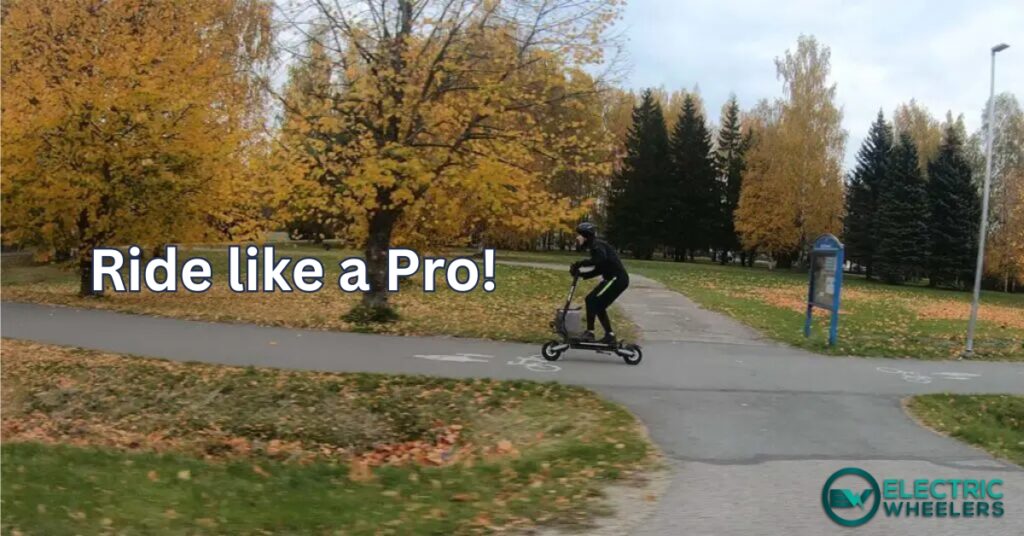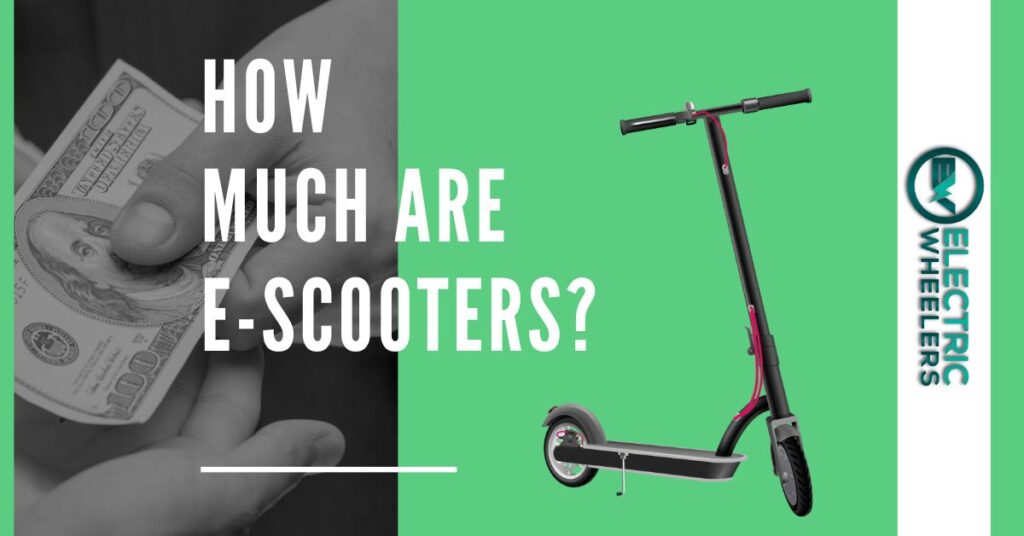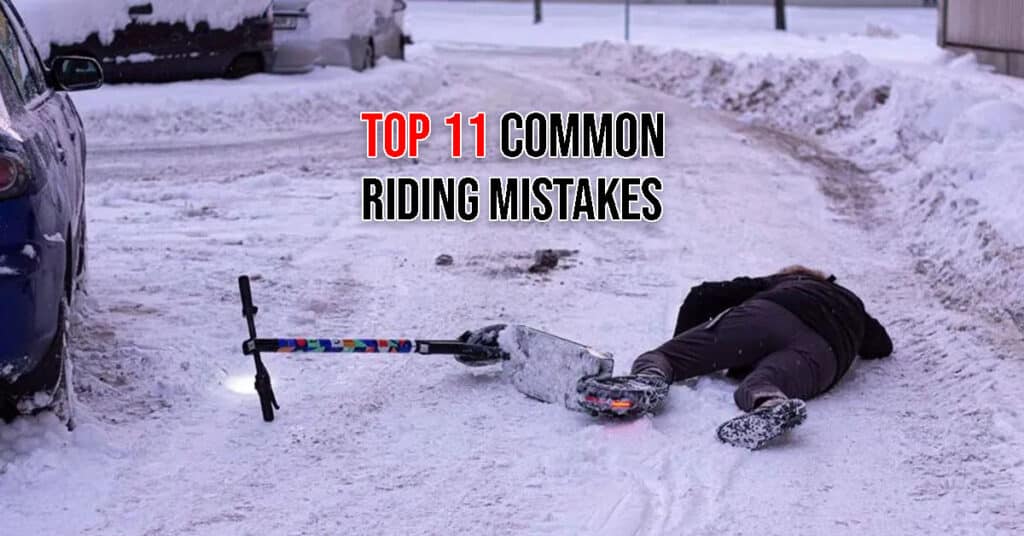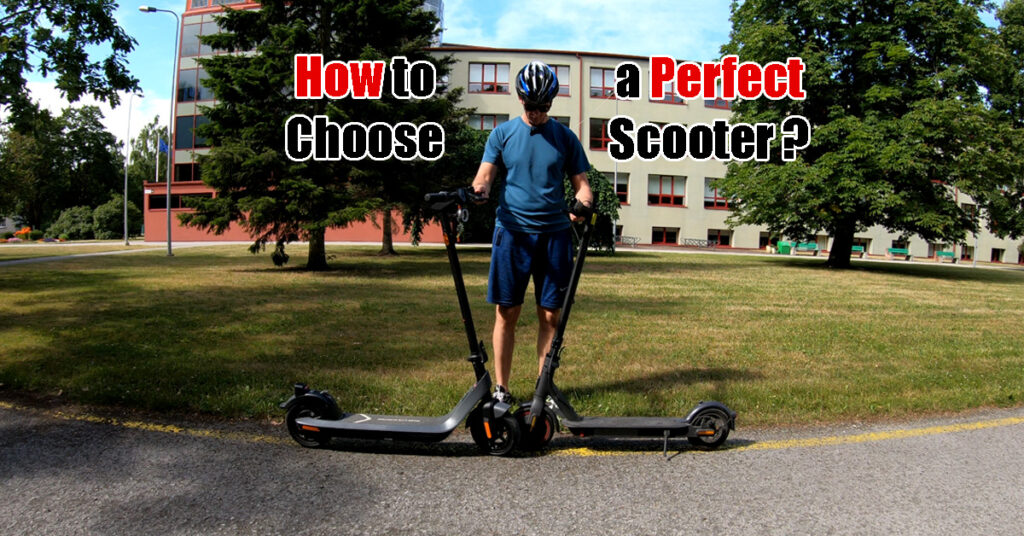For many, hopping on an electric scooter and zipping off comes as naturally as riding a bike. They don’t pause to ponder; they just ride.
However, electric scooters are still relatively new things and I know some people are a little bit afraid of these.
Having ridden dozens, if not hundreds, of these modern marvels, I’m here to share some essential tips and insights. There’s absolutely nothing to fear.
So let’s ease those worries and get you rolling with confidence!
Riding an electric scooter is easy
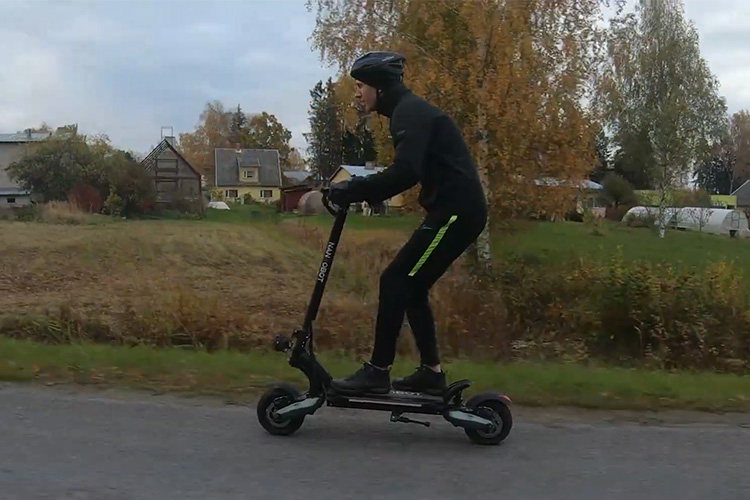
If you’ve used a manual scooter before, you’re already acquainted with the basics of riding an e-scooter. The instructions and experience are essentially the same. However, if you’re new to this, learning may be somewhat difficult.
An e-scooter is a completely new gadget with different controls for navigating and gripping than what a manual scooter may offer. Similarly, it takes a bit of practice and patience, after which you’re good to go!
Step-by-Step Guide for Riding an Electric Scooter
As e-scooters become more popular, more people want to learn how to ride. Even though it’s similar to riding a manual scooter, there are a few differences. Here’s how to go about it!
1. Wear a Protective Gear
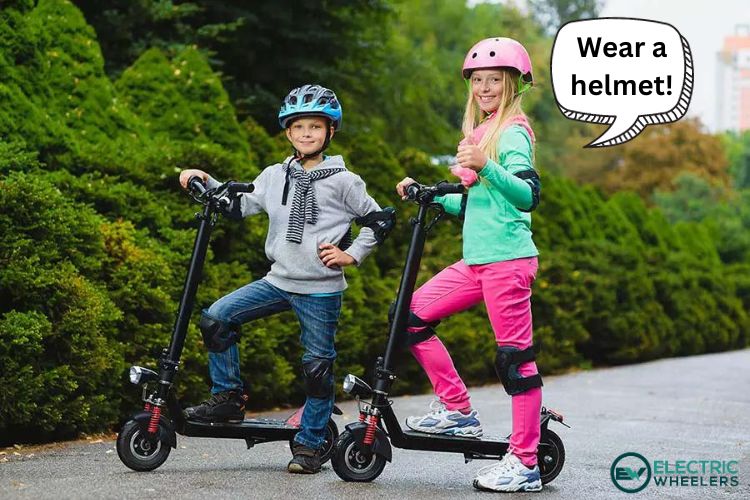
E-scooters are just as risky as bikes, posing the same hazards. With the most advanced e-scooter, you will get a wide speed range, and it would help if you had the right protective gear in case of an accident.
The gear you require for an e-scooter is similar to what bikers need:
- A high-quality helmet
- Elbow pads
- Knee pads
- Gloves
The gloves, knee, and elbow pads are unnecessary once you know how to ride your scooter. Nevertheless, a helmet is always necessary. It will shield your head in case of an accident.
2. Choose the Right Terrain
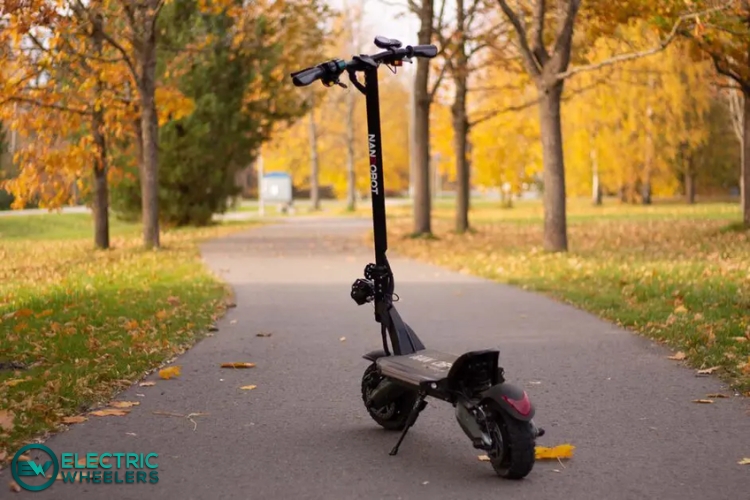
Most e-scooters with sturdy tires are engineered to be used on different surfaces, including rocky and bumpy ones. But overall, the best surfaces for an e-scooter are:
- Smooth concrete
- Asphalt
- Pavement & tarmac
- Flat, man-made surfaces like carpets and tiles
This doesn’t necessarily mean that e-scooters cannot be used on other surfaces, though the ride will be rougher, perhaps less pleasant.
You can ride a scooter on grass, though it depends on the type of grass. For instance, smothered and manicured grass is usually more stable and comfortable to ride on.
On the other hand, if you want to ride on a rough route, you should consider large air-filled tires, mostly used on bigger scooters.
3. Learn All the Necessary Controls On the Scooter
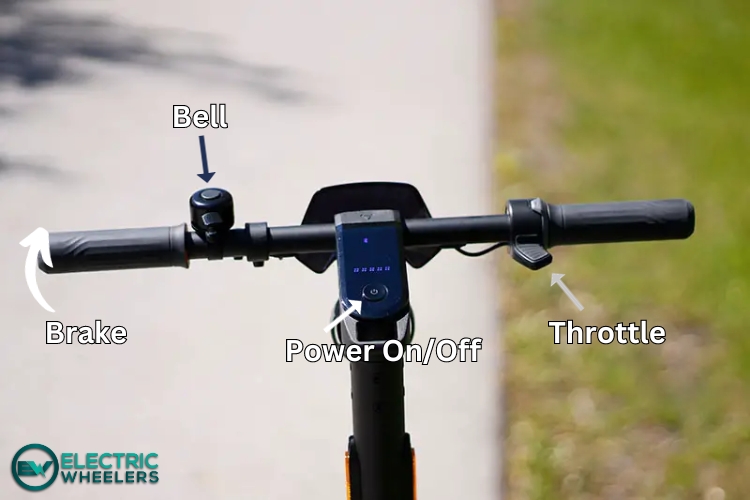
Before you start riding, it would be best if you get acquainted with the scooter controls. Know where the brakes, lights, throttle, and the bell are.
If it’s your first time riding, take it to a safe area with an even surface and try out the brakes and throttle.
Again, if you’re being extra careful, you can test it without powering it on and ride like a basic kick scooter. This way, you’ll get a proper feel of the brakes, steering, and balance.
4. Raise the Kickstand
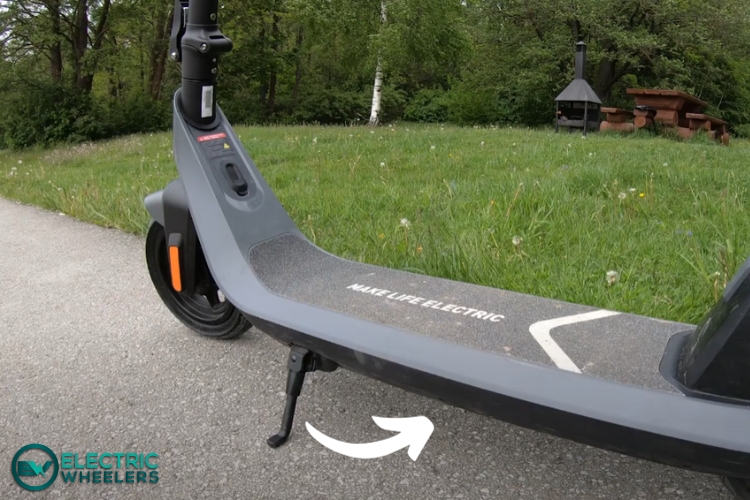
The kickstand is the lever found above or beneath the deck. Just raise it up before you start moving.
Some kickstands have to be raised using the foot, while others when pushing the scooter.
5. Push the Momentum with Your Foot

Make a couple of foot kicks to get the scooter moving. Although some scooters accelerate from a standstill, a beginner should get the initial momentum manually. Just because it’s safer.
6. Take in the Correct Riding Position
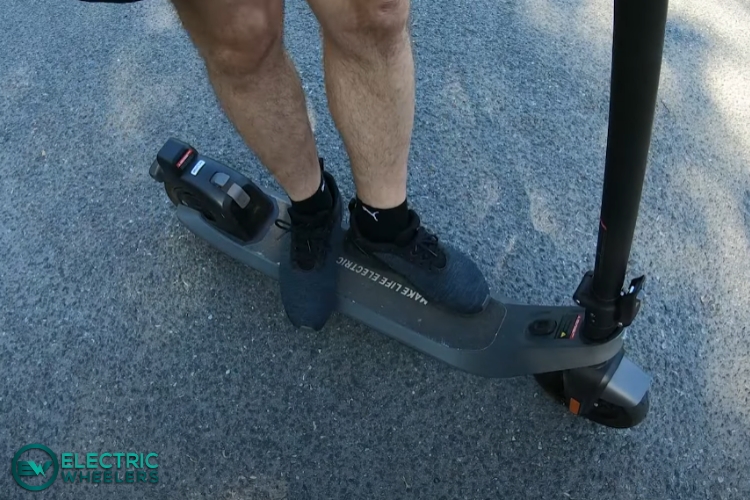
Stand on the deck with your legs apart, with one foot in front of the other. That way, you have a better balance when accelerating or braking.
Also, make sure you leave enough space between you and the handlebar. Slightly bend your knees and firmly grip the handlebar with your hands.
The goal is to have a relaxed posture and remain balanced, regardless of the route you’re riding.
7. Press the Throttle
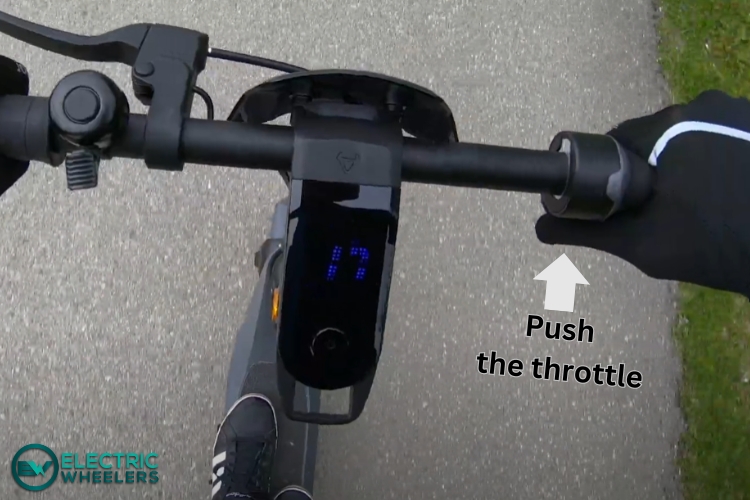
Once the scooter moves and you have taken the correct stance, gently push the throttle. At the same time, hold firmly from the handlebar and look ahead.
8. Test the Braking Sensitivity
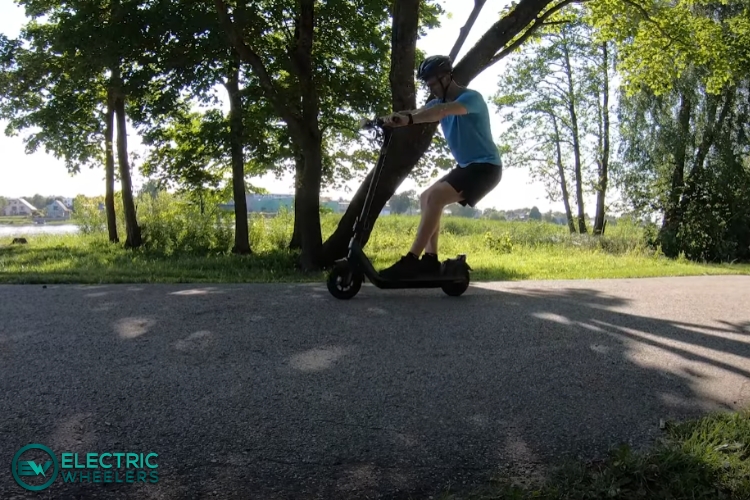
Knowing how to accelerate is important but knowing how to safely stop is even more important.
The brakes of every scooter are different. Some are more sensitive, while others need a more firm press. Either way, you need to test them so you know exactly how aggressively you have to press on different occasions.
It’s also important to balance your body as far back as possible when braking. This way you won’t fly over the handlebar and keep the balance.
Next Steps
After learning the basics of electric scooter riding, you should take a look at what the local law says about electric scooters. Are there any special requirements for the rider or the scooter itself?
We have put together a comprehensive collection of electric scooter rules and regulations in Europe.
Additionally, while you already know how to ride an electric scooter, I suggest reading our article on the 11 most common electric scooter riding mistakes beginner and seasoned riders make.
In this blog post, I will go into more detail about the proper stance, braking technique, setting up the scooter properly, and much more.
Final Words
So, there you have it – your quick start guide to riding an electric scooter. Remember, everyone starts somewhere, and it’s totally okay if you’re not zipping around like a pro right off the bat.
From my own experience, the biggest piece of advice I can give you is this: take your time. Get to know your scooter, feel it out, and most importantly, enjoy the ride.
So, strap on that helmet, start off slow, and let the good times roll. Trust me, once you get the hang of it, there’s no going back. Happy scooting, and here’s to many smooth rides ahead!

The founder and the editor-in-chief of the Electric Wheelers blog. With a previous background in IT, sales, and video editing, he has now established himself as a micromobility expert.
He bought his first e-scooter over 5 years ago and since then has owned dozens of e-scooters and e-bikes. His deep understanding of the technical aspects, coupled with a keen eye for market trends, enables him to provide insightful and reliable content.
His commitment to promoting sustainable and efficient urban mobility solutions has made him a respected voice in the community of eco-friendly transportation enthusiasts.

